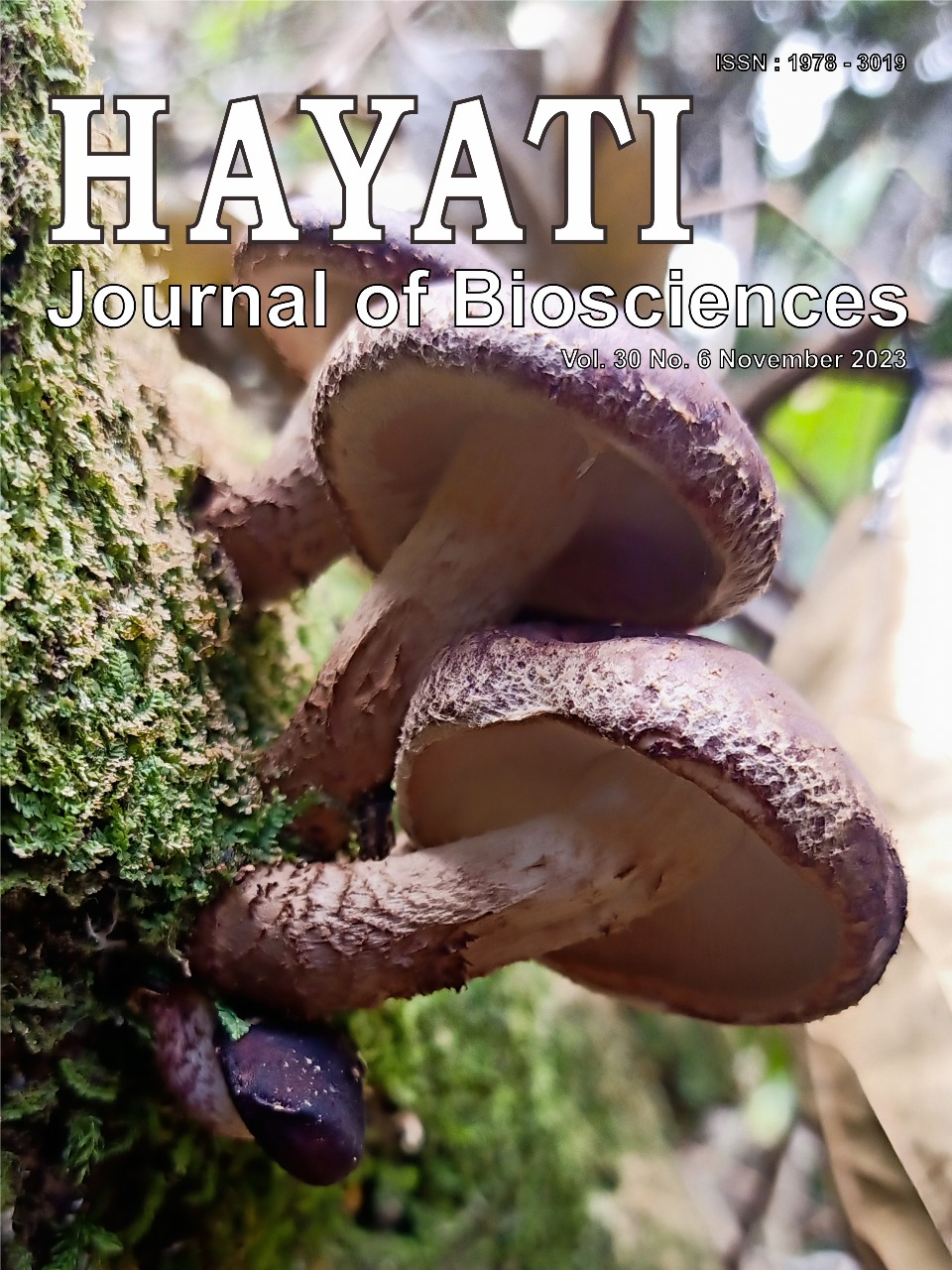Spermicide of Papaya Seed Oil and Compounds
Abstract
This study aimed to determine the spermicidal activity of papaya seed oil (Carica papaya L) from local Bali varieties against Wistar rat spermatozoa by evaluating sperm quality and the correlation between the percentage of motility and viability spermatozoa to identify its active compounds. Papaya seed oil was obtained by extracting papaya seeds using n-hexane solvent. The study was designed as follows; group of spermatozoa Wistar rat were treated with NaCl 0.9% (control, P0), with Sodium carboxy methyl cellulose (NaCMC) 0.5% (P1), with n-hexane extract 0.1%(b/v) (P2), with n-hexane extract 0.3%(b/v) (P3), and with n-hexane extract 0.5%(b/v) (P4). Column chromatography was used to separate the n-hexane extract into two fractions, A and B. The spermicide test for fractions A and B followed the same design as the test for n-hexane extract but until the P7 group. The result showed that fraction B exhibited higher spermicidal activity, with 23.3% motility and 33.8% of viability sperm at 100 ppm. The identification of fraction B by LCMS showed at least 12 mixture compounds were venoterpine, vitamin K5, 5-phenyl-2-pyridinamine, harmalan, styrylquinoline, 1,2,3,4-tetrahydro-1-benzoyl-2-methyl-4-phenylamino-quinoline, calcitroic acid, siderol, N-benzyl-linoleamide, (3β)-3-(diisopropylamino)androst-5-en-17-one, pipereicosalidine, and 25-azacholesterol. Spermicidal activity may be a synergistic effect of several compounds that have a cytotoxic activity such as styrylquinoline, 1,2,3,4-tetrahydro-1-benzoyl-2-methyl-4-phenylamino-quinoline, siderol, and pipereicosalidine.
Downloads
Copyright (c) 2023 I Made Sukadana, Sri Rahayu Santi, Ni Putu Lisna Oktaviani

This work is licensed under a Creative Commons Attribution-NonCommercial 4.0 International License.
HAYATI J Biosci is an open access journal and the article's license is CC-BY-NC. This license lets others distribute, remix, tweak, and build upon author's work, as long as they credit the original creation. Authors retain copyright and grant the journal/publisher non exclusive publishing rights with the work simultaneously licensed under a https://creativecommons.org/

























.png) IPB University
IPB University Department of Biology
Department of Biology The Indonesian Biological Society
The Indonesian Biological Society 

